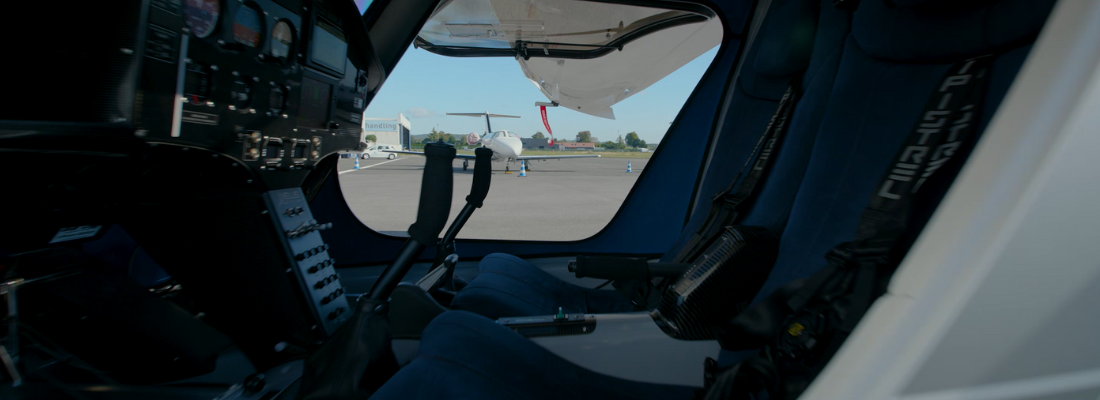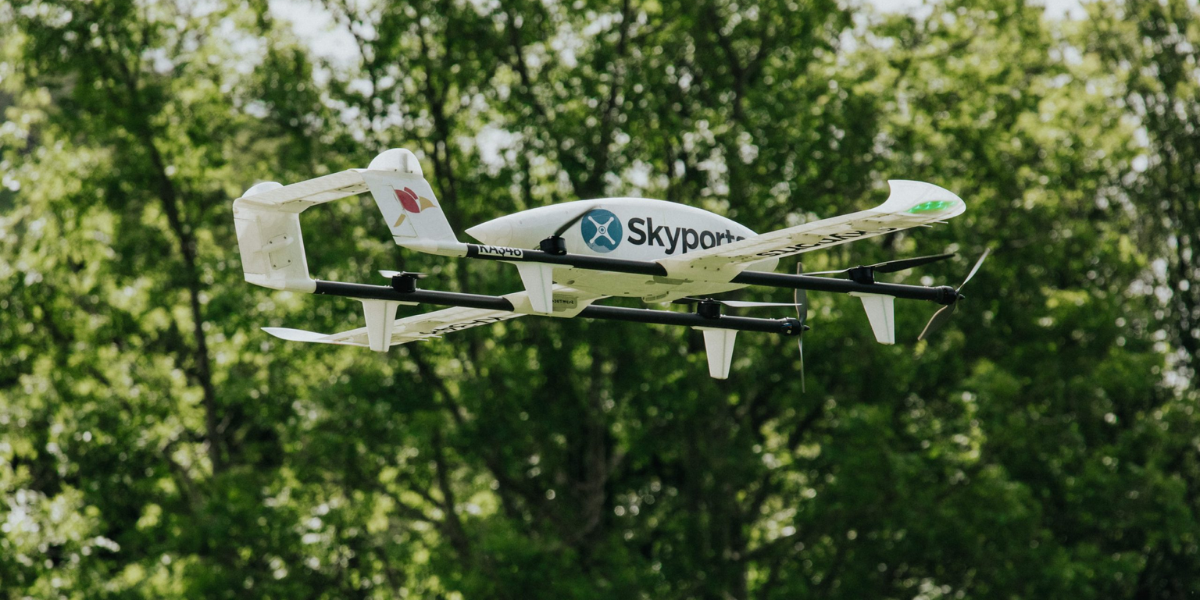Insights Amsterdam, Japan and Paris region on innovative Urban Air Mobility
During the ADW Industry Update of 6 October leading cities and industry experts of Amsterdam, Japan and Paris region shared their policies and experiences in the space of new technology, policy making and smart mobility concepts. In less than an hour, over 200 interested parties from all over the world were informed about the latest developments.
The Industry Update started with a short presentation of the Drone Industry Barometer 2022, by Kay Wackwitz, CEO at Drone Industry Insights, a leading source for independent drone market intelligence. Wackwitz spoke about the nearly 7 billion dollars of investments done in the drone industry last year. “About 4 billion of that fell into the urban air mobility market: everything that is around buzzwords like passenger drones, eVTOLs and air taxis. Despite a pandemic, despite different uncertainties, this market is going strong. And this leads us to the conclusion that everything that was around hype is much lower and the trust is much higher than it used to be. And this, I think, is very well reflected by those investments.”
Drone Industry Barometer 2022
Resource allocation of drone companies focuses less on hard- and software, since drone technology reached a certain level of sophistication. “But marketing and sales efforts are going through the roof.” Wackwitz told the audience about the ecosystem that is being shaped. “An ecosystem that is far from the end. There's a lot of elements that need to be aligned to make this whole ecosystem work.” Then he sketched the future, showing a drawing of a future city. “You see cargo platforms, you have passenger platforms, small and big. You have ground infrastructure, physical infrastructure where these platforms can take off and land. And there will be some sort of unmanned traffic management in place, whether that is controlled by people or by algorithms.”
For all of these systems to work and to perform safely, quietly and seamlessly, they all need to speak the same language, Wackwitz explained. “How do we handle this if these platforms fly fully automated? That is a very big challenge.”
Amsterdam, Japan and Paris region
Moderator Munish Khurana, Senior Manager ATM/UTM at Eurocontrol then introduced three regions: Amsterdam, Japan and Paris, providing very interesting dimensions related to innovative urban air mobility. Joyce Abou Moussa from the Groupe Aéroports de Paris (ADP) explained how Groupe ADP is deploying advanced air mobility in the Paris region by making it happen in a very incremental way, starting 2024 for the Olympic and Paralympic Games and the Paris region, and progressively work on a roadmap that ensures operational scale up by 2030.
Hiroko Nakamura, Associate Prof. at University of Tokyo and the founder of UIC2-Japan/JUTM explained the advanced mobility roadmap that the Ministry of Japan published last year. Japan invested quite a lot of R&D effort into realizing advanced air mobility. Finally, Han de Glint, Business Developer at KPN, presented the company's ambition to enable safe and reliable services to connect drones to each other and to other parts of society.
Pre-commercial service
Munish Khurana asked the panellists from Paris and Japan how they look at the near future when it comes to advanced air mobility. Joyce Abou Moussa answered that “On the very short term, advanced air mobility, and more specifically the urban air mobility use cases, will launch as a niche-market in addition to the time-sensitive medical delivery and emergencies use cases. We are currently studying different scenarios for pre-commercial services by 2024 to connect our airports to the city centre of Paris. We are convinced that Paris 2024 Olympic and Paralympic Games will bring the momentum needed to cross a strategic frontier and accelerate the large-scale deployment by 2030 with an extended network of urban and suburban routes. This network shall be integrated in a broader mobility strategy to achieve strategic objectives such as reducing community times, reducing air pollution, enhancing connectivity, improving access to healthcare and services and reducing socio-economic disparities.” Hiroko Nakamura said that in Japan they are not only looking at air mobility between and in cities, but also as a regional service to complement other transportation modes.
Quality of life
Han de Glint was asked what it is that we need to do to prepare our digital infrastructure to enable urban mobility and particularly the infrastructure related to connectivity. He said “it's not about the technology itself, but it's about the quality of life and the way you make life easier. So in the short term we are focusing on doing use cases with, for example, the regulator, the UTM provider, the drone operator, but also the end customer to define under what kind of conditions we can build such an infrastructure.”
Public perception and safety
An important part of the Industry Update was about public acceptance and the image that drones have. Munish Khurana asked how we can improve the perception of the public by working on eco friendliness, by reducing the noise level, by managing visual pollution and privacy. “But also how do we convince our public that if a drone is flying above you and you see it in your back garden, you should feel safe. It's not going to fall on you or it's not going to damage the property.” “Perceived security is very important here”, said Hiroko Nakamura. “Rather than the absolute safety or absolute security. And that means you have to communicate very well with civilians. Local governments should join this discussion from the beginning because they can mediate between services and habitants. How to get the trust is the most important thing.” The experimental site in Paris not only needs to be a technical experimental site, but also a social acceptability platform, Joyce Abou Moussa explained. “By effectively engaging and consulting local communities and key institutional stakeholders from the outset and integrating their feedback into the development of this transport solution, we would be a step closer to achieving public acceptability and the incremental implementation of Advanced Air Mobility.”
The most important point that the Industry Update highlighted was that “we need to improve the public perception by assuring safety of drone operations,” Khurana said in the end. “Security and privacy are equally important and we need to keep an eye on what's happening around the world, learn from any accidents that have taken place. And there is a need to globally harmonize the standards and regulations. But yet at the same time, each city will have its own peculiar needs.”
Watch the full ADW Industry Update recording here >> Recordings and presentations



